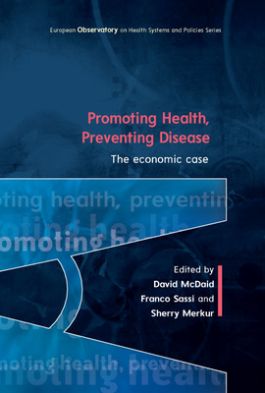Promoting Health, Preventing Disease: the Economic Case
- Access the eBook anytime, anywhere: online or offline
- Create notes, flashcards and make annotations while you study
- Full searchable content: quickly find the answers you are looking for
About the authors
Acknowledgements
List of tables and figures
Abbreviations
Executive summary
Part I: Introduction
Introduction to the economics of health promotion and disease prevention
Supporting effective and efficient policies: The role of economic analysis
Measurement challenges in the economic evaluation of public health interventions
Part II: Making the economic case for tackling key risk factors for health
Curbing tobacco smoking
Tackling alcohol-related harms
Promoting physical activity
Appendix: the effectiveness of interventions for physical activity
Improving the quality of nutrition
Addressing environmental risks for child health
Preventing road-related injuries
Protecting mental health, preventing depression
Part III: Broader perspectives on the economics of health promotion and disease prevention
Social determinants of health: Early childhood development and education
Health promotion, disease prevention and health inequalities
Part IV: Translating evidence into policy
Evidence into policy: The case of public health
Making an economic case for intersectoral action
The economics of health promotion and disease prevention: The way forward
An economic perspective is about more than counting the costs associated with poor health. It is about understanding how economic incentives can influence healthy lifestyle choices in the population. The book provides tools for developing effective and efficient policy strategies and addressing trade-offs between the goals of improving population health, while being mindful of the need to tackle inequalities in health outcomes across individuals and populations.
The book:
- practically illustrates methods and measures of cost and outcome used in the evaluation of interventions
- covers specific risk factor areas including tobacco smoking, alcohol, unhealthy diets, physical inactivity, poor mental health and harmful environmental factors
- considers cross-cutting themes including key implementation issues, health inequalities, and the merits of early life interventions

